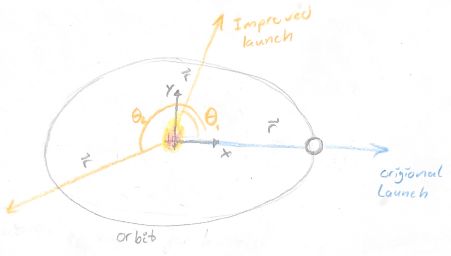
Now that we're back on track with our escape plan, by deciding the planet we're gonna vibe with, and some more thorough design decisions regarding our power source for on board equipment. Next we're gonna have a look at simulating our journey. The first step of this is being able to alternate the launch angle from our planet, which we were unable to do in our origional simulations. There we were only able to launch our spaceship directly away from the sun, in the planet's origional position which poses an issue if our destination planet is farther ahead of our planet at its initial position.
Not much needs to be changed, but we'll run you through what we're going to change: firstly we'll base ourselves on our initial launch, as compared to the planet surcace and make an exterior orbit of sorts depicting possible end-possitions and, -velocities. Next we're going to attempt to move the origin of the system to the star, since we're interested in when and where in our orbit we need to launch to get the most effective journey. This means we'll have to introduce a parameter for the time (when in our orbit we are) and angle (where in the orbit we are at the given time). Once we've established these we'll be able to make a launch trajetury like the orange one in the image as opposed to the severely limeted blue one.
Launching antics aside, we're going to have a bit of downtime sending our simulation there, please don't touch the 'speed up simulation' key, please, I really need to explain this before we become a very undersized, planet-ram. We're going to need to preform an orbital injection in order to land our spacecraft, if we don't one of the following is going to occur:
- We overshoot the planet and drift into the outer solar system, and either
- Get captured by the gravitational fields of the bigger planets (Let's pray one of the moons has livable conditions)
- Keep on going into interstellar space (not fun)
- Or we crash back into our star (Still not fun, but at least not as cold) - Our trajectory is altered by the planet's gravity, either sending us flying at a different angle, and possibly different velocity into the outer solar system. I refer you to point 1 for what will happen next.
- We ram the planet (this one straight up hurts)
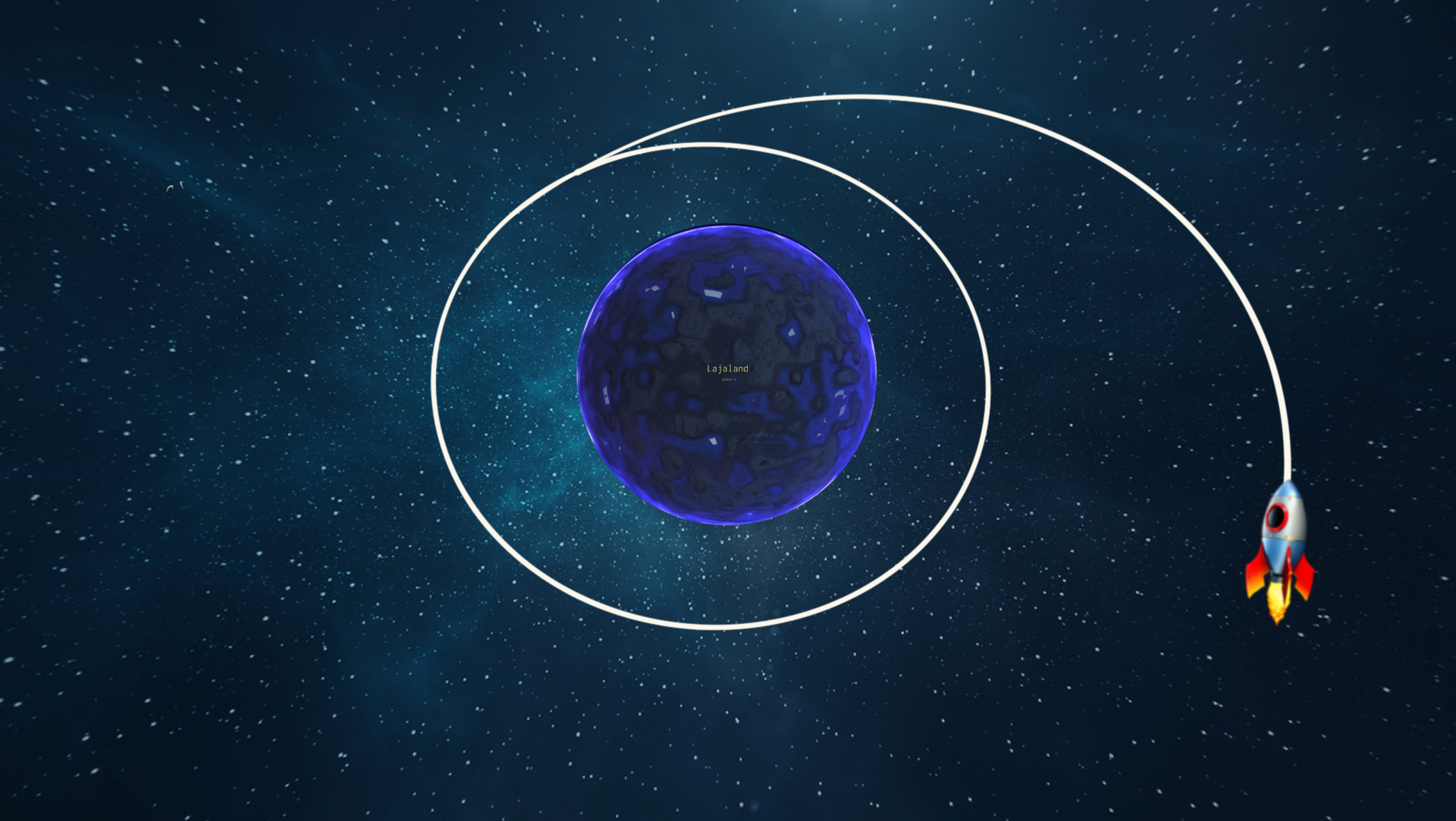
Looks like we're vlosing in on our planet time to preform that 'orbital injection maneuver', oh wait 'Let me push that pause button for a sec' I completely forgot to explain what an orbital injection maneuver is, don't worry it's not a medical procedure. It may sound a bit complicated, but it's simply the process of establishing a stable orbit around a planet, from a starting position in space. To establish an orbit around a planet, we need to get close enough that
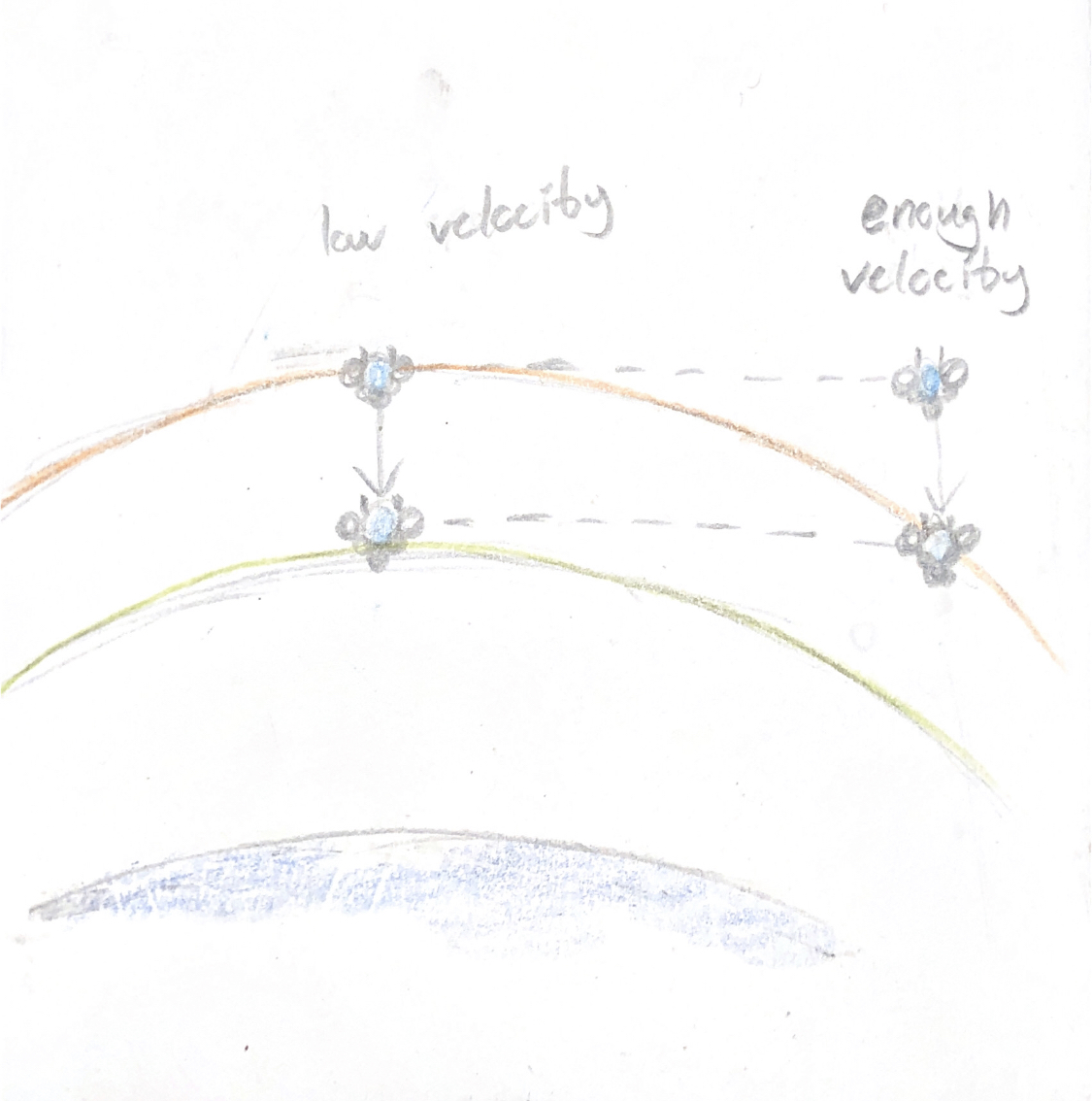
the pull of the planet is greater than that of the sun. This will start altering our trajetury towards the planet centre, almost like a turn. During this we may need to slow down the rocket or alter its angle with thrusters in order to not escape the gravitational pull of the planet again. After this is said and done, we need to make sure our horizontal velocity, compared to the planet surface, is great enough to maintain a stable orbit. If you look at the picture the spacecraft with the correct velocity will move far enough to the side to where its fall lets it stay the same distance from the surface. While the other is not moving fast, and will lose altitude, as represented by th green ring. Put simply we're trying to fall sideways as fast as we're falling downwards. Or else we're just going to slowly, or very quickly crash into the planet surface at an angle. Call it falling with style, and a lot of calculations if you will.
In order to get caught by the planet's gravity we have to be close enough to where newton's law of gravity \(\vec{F} = G\frac{mM}{|\vec{r^2}|}\) will make the gravitational pull of the planet greater than the star. If we didn't get close enough to the planet, as you can see the pull will be weaker, and we won't get the freefall action described above. This gives us the distance to the planet: l, to be: \(l = |\vec{r}|\sqrt{\frac{M_p}{kM_{\odot}}}\), we don't have this k yet however, so the exact distance we'll need isn't certain yet, but our scientists are hard at work manufacturing enough measuring sticks to find the answer! Of course, if we look at the formula, we can tell the distance is way more forgiving when k is large, this is because the square root is almost certainly going to be a number < 1, meaning the resulting value will be greater than what is in the root, such as \(\sqrt{0,25} = 0,5\).
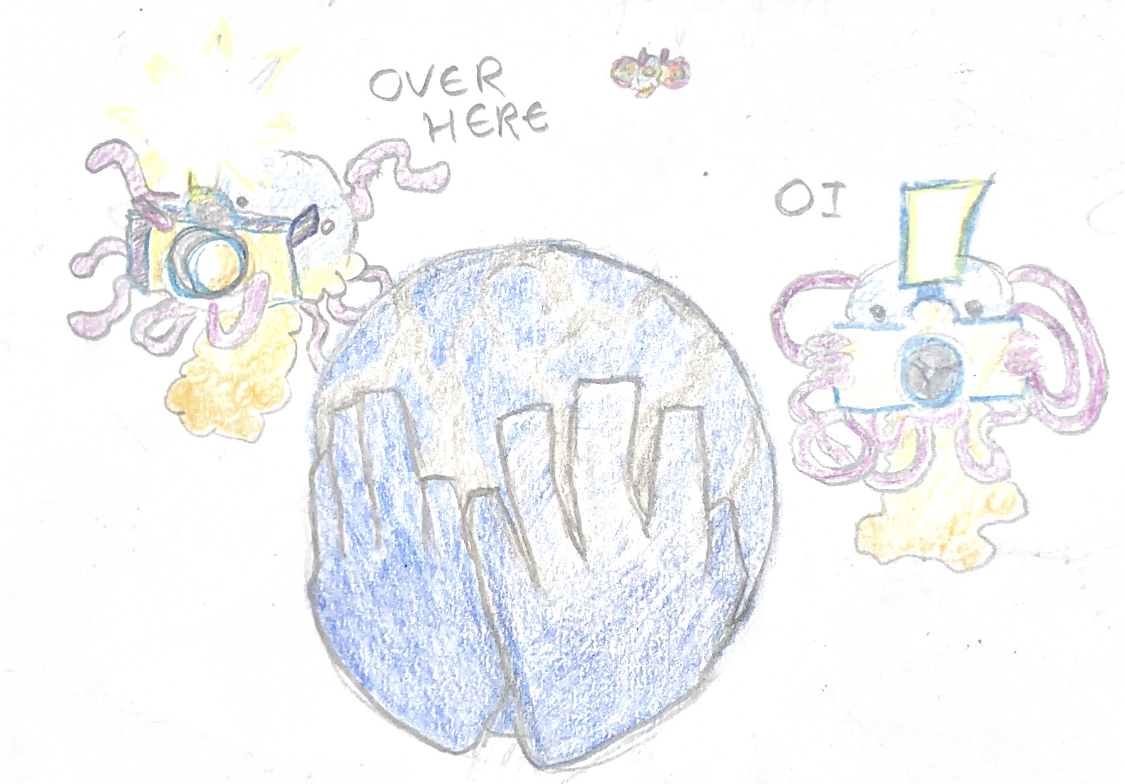
Speaking of getting close to our new home planet, let's get to know them a bit better! What better way than with a nice old portrait, but wait a minute... I can't see it could my camera be faulty?
Well it could be that, but I think we're just too far away to actually see our new friend :>
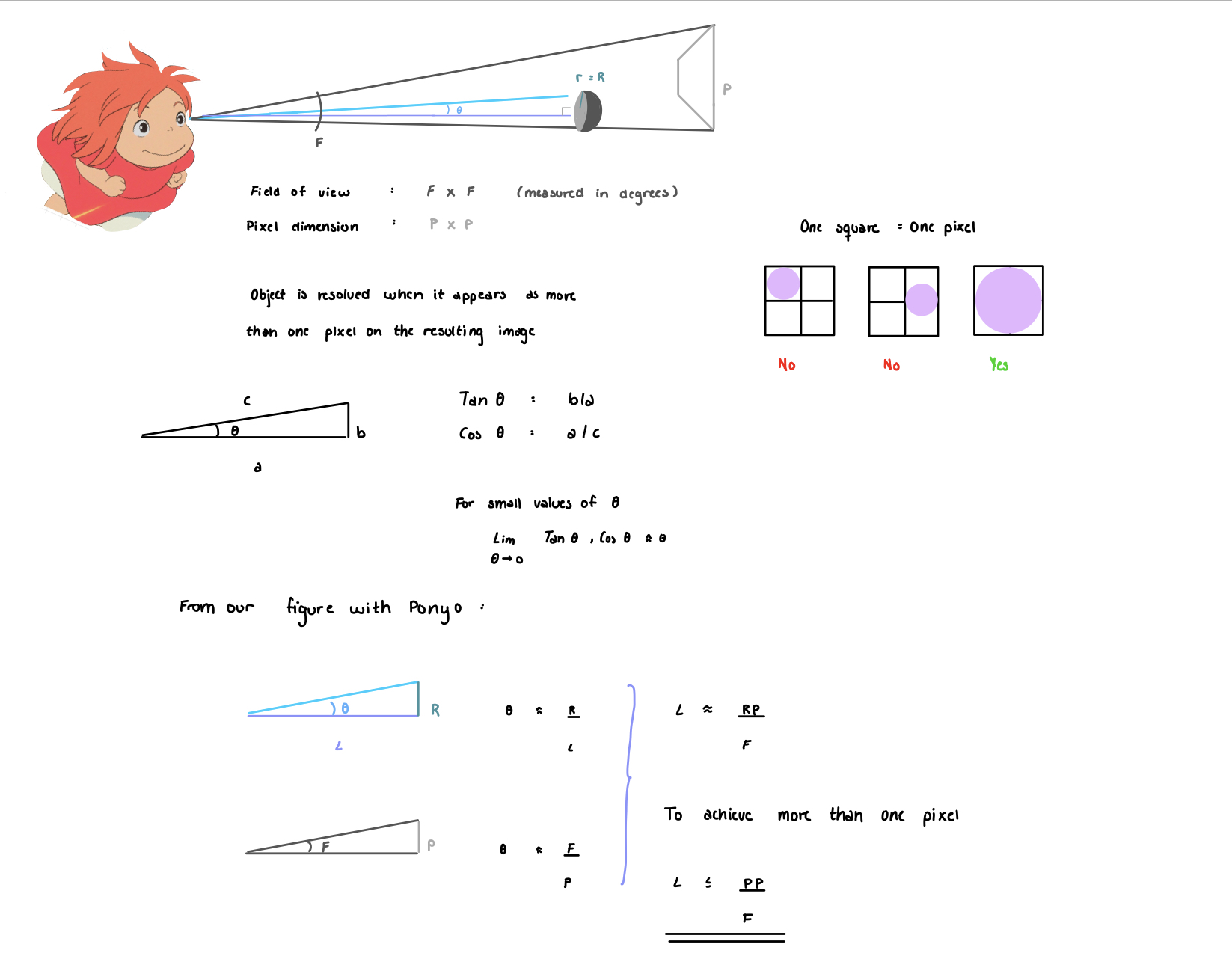
So, we've decided to take a small dive into optics here, particularly how we depict things. In order to take a 'phresh' picture of our dear new home. We'll be getting into this in more detail later on, so we won't be hyperfocusing on the nitty gritty here. When depicting an object on something like your phone camera, you may discover objects at a distance being very blurry, discolouring the tiny area they occupy or just outright not showing up, although you can see them just fine with your eyes. This has to do with the resolution of your camera. Simply put the resolution is how the camera distributes pixels across your field of view, or how it divides what you can see into smaller squares. These squares look at how much light is recieved, and the color of said light, in other words how light the pixel should be and what color it is when we combine the red, blue and green. Which are the base colors a camera uses to represent all other colours. In order to get an actual picture of our planet here we need it to cover slightly more than a pixel, or else we're depicting a bunch of background on our planet depiction. This means we need a distance of \(L \leq \frac{RP}{F}\), R being the planet radii, P being the width of a pixel, F being our field of view and L being the distance to observe at least one pixel.
Yo, so when can we see our planet dude? is it like really close or something (I sure hope not), drop some rhymes about single pixel resolution being kinda wack and underwhelming my G.
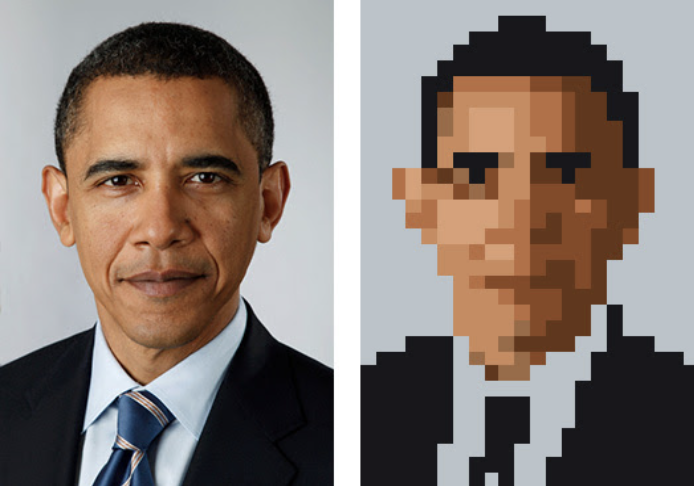
Well, not to dissapoint, but we gotta be pretty close, we can be farther away with higher resolution (more pixels total), but alas out cameras are kinda doo doo on this shuttle. So if we look at the picture to our right for comparison, we may observe the planet in as crisp detail as former president of the united states; Barack Obama as depicted on the left side, but our cameras may pick up something akin to his pixelated counterpart to the right. If we compare our planet depiction with this, it needs to fill an area greater than one of the pixels; the squares that amek up the picture, in order to be viewable. If not, it would have the same effect as his lip fading away as the resolution is reduced.
Join us next time as we finally start shooting up a satelite to look around our system.
